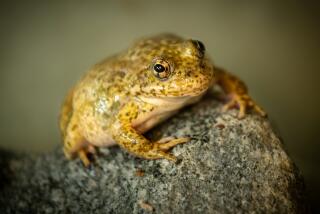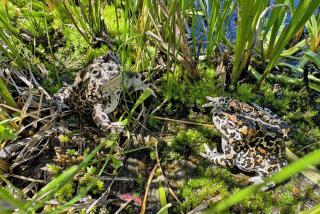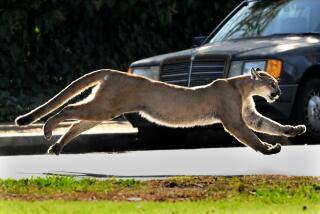Mountain yellow-legged frog
- Share via
[ RANA MUSCOSA ]
Sleeping under lakes lidded with several feet of ice and snow, the 2- to 3-inch-long yellow-legged frog of the High Sierra awaits not only the spring thaw but also critical decisions that will determine its fate. Once abundant in the Sierra Nevada and in mountain ranges circling the Los Angeles Basin, these hardy amphibians number fewer than an estimated 100 individuals in all of Southern California plus a remote area of Yosemite and Kings Canyon-Sequoia national parks. Wildlife biologists attribute the drastic decline to voracious nonnative trout that devour their tadpoles. As the ice melts, the debate over the benefits and risks of fish stocking continues among conservationists, wildlife managers and anglers.
NATURAL HISTORY
At elevations of 5,000 to 12,000 feet, the growing season is so short that many yellow-legged frogs take two to three winters to transform into adults, a rare occurrence in frogs. This slow start limits their range to the deep, permanent lakes where trout also thrive.
KEY CHARACTERISTICS
Adults are mottled olive, and during the breeding season they may smell strongly of garlic. The 3-inch-long tadpoles are among the largest in North America.
More to Read
Sign up for The Wild
We’ll help you find the best places to hike, bike and run, as well as the perfect silent spots for meditation and yoga.
You may occasionally receive promotional content from the Los Angeles Times.






